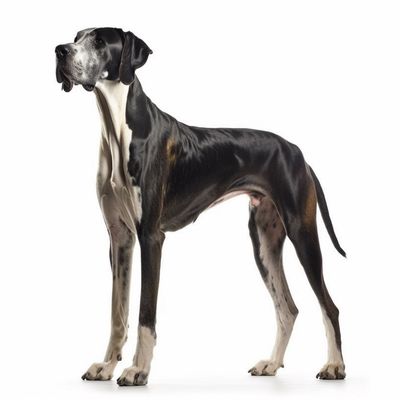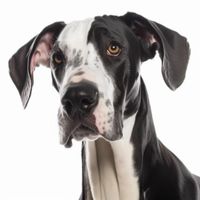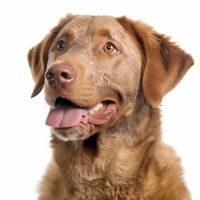Cocker Spaniel - vs - Great Dane - vs - Chesapeake Bay Retriever

Cocker Spaniels are medium-sized dogs, weighing 20-30 lbs, with a height of 14-16 inches.
Cocker Spaniels enjoy daily walks, playtime, and moderate exercise to maintain their physical and mental health.
Cocker Spaniels are intelligent and eager to please, making them relatively easy to train with patience and consistency.
Cocker Spaniels are intelligent dogs known for their problem-solving skills and quick learning ability.
Cocker Spaniels are adaptable and can thrive in various living situations, including apartments and houses.
Cocker Spaniels can be good with kids, especially when socialized from a young age.
Cocker Spaniels can get along well with other pets when properly socialized.
Cocker Spaniels can tolerate cold weather but should be protected from extreme cold with appropriate clothing and shelter.
Cocker Spaniels can handle some heat but should be provided with shade, water, and limited time outdoors in high temperatures.
Cocker Spaniels have medium shedding due to their long, silky coats.
Cocker Spaniels require regular grooming, including brushing, to keep their coats healthy and free of mats.
Cocker Spaniels have average bark tendencies and may bark for various reasons, such as alerting their owners or during playtime.
Cocker Spaniels may have some health issues, requiring regular veterinary checkups and preventative care.

Great Danes are giant-sized dogs, weighing 110-175 lbs, with a height of 28-32 inches.
Great Danes have a medium energy level, enjoying daily walks and playtime but also appreciating relaxation time.
Great Danes need regular exercise, including daily walks and playtime, but should not be overexerted due to their size.
Great Danes are intelligent and trainable, but can be stubborn at times. Consistent, positive reinforcement is key.
Great Danes are intelligent dogs, capable of learning a variety of commands and tasks.
Great Danes can adapt to different living situations, but their size requires enough space to move comfortably.
Great Danes can be good with children due to their gentle nature, but their size requires supervision and proper handling.
Great Danes can get along well with other pets, especially when raised together. However, early socialization is important.
Great Danes can tolerate colder temperatures, but their short coats require proper protection during extreme cold.
Great Danes can tolerate hot climates, but they need to be monitored for signs of overheating during exercise.
Great Danes have a short coat and shed moderately, requiring regular brushing to manage shedding.
Great Danes require minimal grooming, including occasional brushing and bathing to keep their coats clean and healthy.
Great Danes bark occasionally, usually only when necessary or provoked.
Great Danes may have some health issues, requiring regular veterinary checkups and preventative care.

Chesapeake Bay Retrievers are large dogs, weighing 55-80 lbs, with a height of 21-26 inches.
Chesapeake Bay Retrievers have a high energy level and require regular exercise and mental stimulation.
Chesapeake Bay Retrievers need a significant amount of exercise, including daily walks, runs, and opportunities to swim or retrieve.
Chesapeake Bay Retrievers are intelligent and trainable, but can be stubborn. Consistent, positive reinforcement is essential.
Chesapeake Bay Retrievers are highly intelligent dogs and excel in various dog sports and activities, especially those involving water.
Chesapeake Bay Retrievers can adapt to different living situations, but they need plenty of space and exercise to thrive.
Chesapeake Bay Retrievers are good with children when properly socialized and supervised.
Chesapeake Bay Retrievers can get along well with other pets, especially when raised together.
Chesapeake Bay Retrievers are well-suited for cold climates, thanks to their dense, water-resistant coats.
Chesapeake Bay Retrievers can tolerate hot climates but need to be monitored for signs of overheating during exercise.
Chesapeake Bay Retrievers have a dense coat that sheds moderately, requiring regular brushing to minimize shedding.
Chesapeake Bay Retrievers require regular grooming, including brushing and occasional bathing to keep their coats clean and healthy.
Chesapeake Bay Retrievers bark occasionally, usually only when necessary or provoked.
Chesapeake Bay Retrievers are generally healthy, but regular veterinary checkups and preventative care are still necessary.



